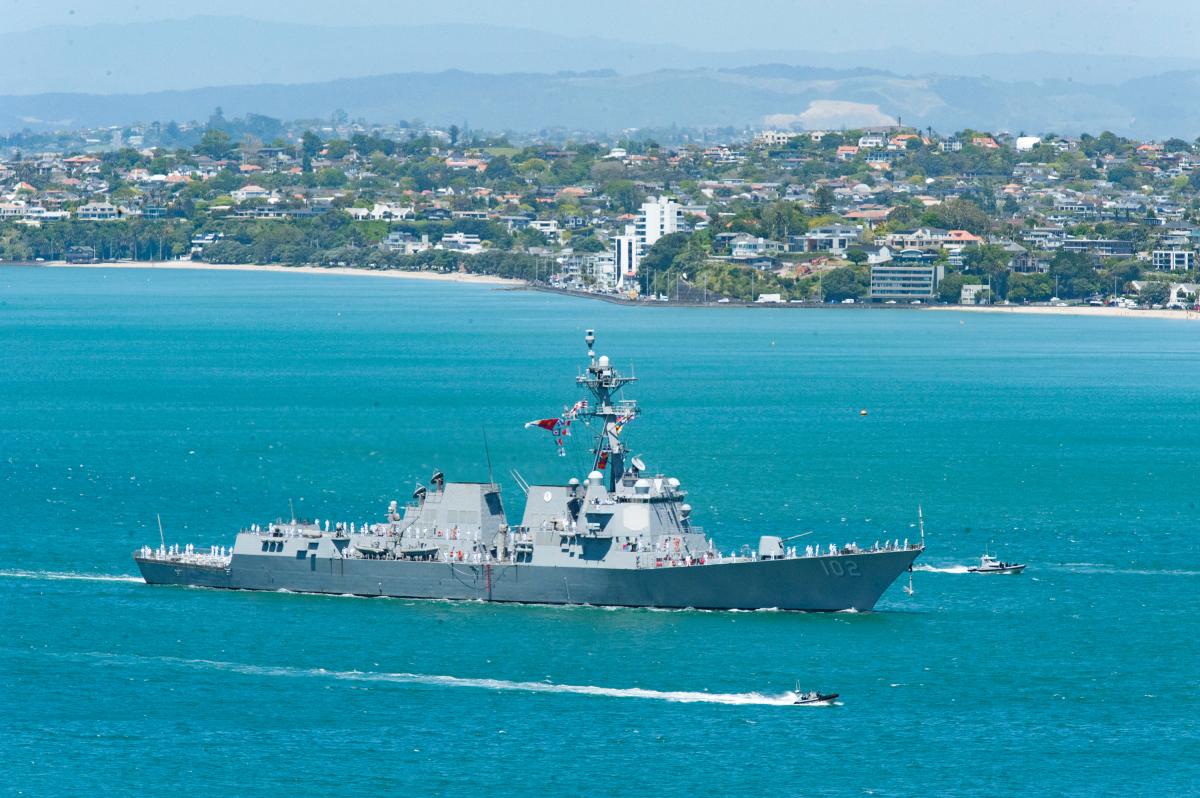In February 1985, the government of New Zealand refused the destroyer USS Buchanan (DDG-14) entry to the port of Auckland after the U.S. Navy refused to declare whether the Buchanan was carrying nuclear weapons, which ran afoul of New Zealand’s recently implemented “nuclear free zone” policy. This otherwise minor incident led the U.S. Navy to ban New Zealand port calls by any Navy or Coast Guard ship and to prohibit New Zealand Navy vessels from visiting U.S. Navy facilities.
While Chinese and Russian warships were allowed to sail into Pearl Harbor during Rim of the Pacific exercises, New Zealand naval forces were forced to seek private dockage.
In 2012, then-Secretary of Defense Leon Panetta eased restrictions, opening an avenue for the Secretary of Defense to grant conditional waivers on a case-by-case basis. This was used to great effect with the visit of the destroyer USS Sampson (DDG-102) to Auckland in November 2016 and the Coast Guard icebreaker Polar Star (WAGB-10) to Lyttelton in 2017 and 2018. Also under this protocol, HMNZS Canterbury (2014), Te Kaha (2016), and Te Mana (2018) were welcomed as full participants in Rim of the Pacific exercises.
These port visits on both sides of the Pacific created an incredible amount of goodwill and demonstrated a willingness to reengage with our Five-Eyes partner. Strengthening the military-to-military relationship with New Zealand is an excellent step toward countering the influence of near-peer competitor China in the South Pacific. Yet despite the thaw and such compelling justifications, the underlying ban remains in place.
In stark contrast, China denied the USS Wasp (LHD-1) entrance to Hong Kong in September 2018 in protest of U.S. arms sales to Taiwan, yet less than two months later, the Navy sent the entire USS Ronald Reagan strike group to make a port call in Hong Kong. It is fundamentally misguided to continue to enforce a ban on port calls with an ally and trusted partner while planning port visits with a great-power competitor in the region.
Chinese investment in New Zealand continues to surge, exceeding $1.5 billion in 2017. China has pursued an expanding economic, diplomatic, and military engagement with New Zealand, including port visits, exercises, and signing a “Comprehensive Strategic Partnership” agreement in 2014. Chinese President Xi Jinping made a state visit in November 2015.
Strengthening U.S. ties with New Zealand makes sense. From a strategic standpoint, Chinese aggression is a significant threat to the security of the Pacific theater, and U.S. alliances are important to countering this aggression. The historical military and social ties between the United States and New Zealand, including normal army-to-army and air force-to-air force relations during the naval ban, make this country an important partner.
Operationally, as it relates to Coast Guard operations in Antarctica, ending the ban also is a winner from a logistical standpoint. The transoceanic journey for an icebreaker coming from Seattle is 800 nm and three days shorter. Lyttelton also is a strategically important port, as nearby Christchurch is the logistics hub of the U.S. Antarctic Program and forward operating base for the 109th and 67th Air Wings. In addition, compliance with the Antarctic Treaty requires that vessels operating there not carry nuclear weapons, so ships bound for Antarctica that call on New Zealand ports are nuclear free as a matter of course.
Despite these ample and compelling motivations, the Navy remains opposed to any Coast Guard or Navy ships calling on New Zealand ports. It should be clear at this point, more than 30 years removed from an otherwise forgettable incident, that New Zealand’s nuclear free policy has not led other nations in the Indo-Pacific region to adopt similar policies, as was feared. It is well past time to remove these obsolete prohibitions and encourage Coast Guard cutters and Navy ships to make port visits in New Zealand, so the nation can get back to the business of strengthening partnerships with trusted allies.




